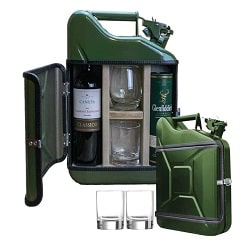Rolex is launching an initiative called Perpetual Planet, which consolidates its ongoing support of research on environmental issues and climate change. It includes a new partnership with the National Geographic Society to study the impacts of climate change that involves a trek to Mount Everest; support for biologist Sylvia Earle’s Mission Blue initiative to safeguard the oceans through a network of marine protected “hope spots”; and it encompasses the Rolex Awards for Enterprise, which recognize individuals whose projects advance knowledge that protects our well-being and the environment.

Scaling Mount Everest is on the agenda as part of a Rolex/National Geographic climate change research initiative.
ROLEX
The initiative is in keeping with Rolex’s history of harnessing the world of exploration as a testing ground for its watches, often supporting ventures that take place in extreme conditions: the Arctic, the summit of Mount Everest or the depths of the ocean in the Mariana Trench. Today, according to Rolex, “exploration for pure discovery has given way to exploration as a means of finding new ways to preserve the natural world.” Rolex thus supports the explorers of today who dedicate themselves to environmental causes.

Rolex supports Under the Pole, an ocean exploration and research program.
ROLEX
The endeavour includes partnerships with National Geographic, whose programs Rolex has supported since the 1950s. Now, Rolex and National Geographic are planning a series of expeditions to answer critical questions about the impacts of climate change on extreme environments. The goal is to gain new insights about the impacts of climate change on the systems that are vital to life on Earth: mountains as the world’s water towers, rainforests as the planet’s lungs, and the ocean as its cooling system.

Rolex sponsored Sir Edmund Hillary’s ascent of Everest in 1953.
ROLEX
The first project is a trek to Mount Everest, including an expedition team led by National Geographic and Tribhuvan University in Nepal. It aims to better understand the effects of climate change on the glaciers of the Hindu Kush-Himalaya that provide critical water resources to a billion people downstream. This information, coupled with additional data sets on water supply and demand in the region, will form the basis of a new index to track the health of the Himalayan water system. Rolex supplied watches to Everest Expeditions in 1933 and again in 1953 when Sir Edmund Hillary and Tenzing Norgay became the first men to reach the summit. The event was commemorated by the Explorer watch, launched in 1953. Rolex also participated in a National Geographic expedition to descend 35,800-feet into the Mariana Trench in 2012, in the Deepsea Challenger, with film director and Rolex testimony James Cameron. Rolex had previously participated in a U.S. Navy-sponsored descent into the Mariana Trench, in the bathyscaphe Triest, with a Rolex Oyster Deep Sea watch fixed to the exterior.

The newest Rolex Explorer, originally launched in 1953 to commemorate Hillary’s expedition to the summit of Mount Everest.
ROLEX
Rolex is also a strong supporter of projects by Sylvia Earle, a pioneer of ocean exploration for nearly 50 years. Her Mission Blue initiative has inspired communities and governments to shield marine life that is at risk from human pressures through Marine Protected Areas that she calls “hope spots.” These are areas of the oceans designated as being vital to the preservation of species, either because of the range of diversity they display or their significance as homes to endemic, rare or endangered species. It also includes places where local communities rely on a healthy marine environment for their survival. With the support of Rolex, the number of Hope Spots has increased from 50 to 112 over the past five years. Earle aims to protect 30% of the world’s oceans by 2030. Currently, 8% of the oceans are protected.
Through the Rolex Awards for Enterprise, first launched in 1976, Rolex has contributed to the preservation of 17 ecosystems that are crucial for biodiversity and for the human communities that depend on them. Five new laureates for 2019 will be announced later this week. This article will be updated then. Stay tuned!








